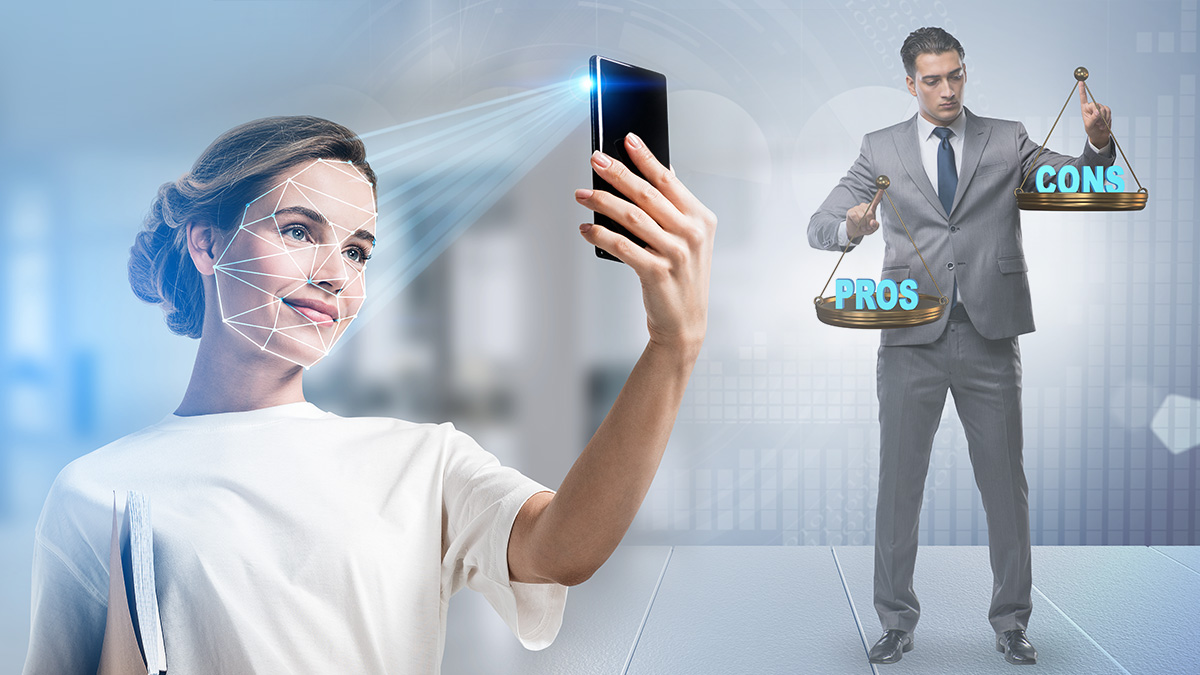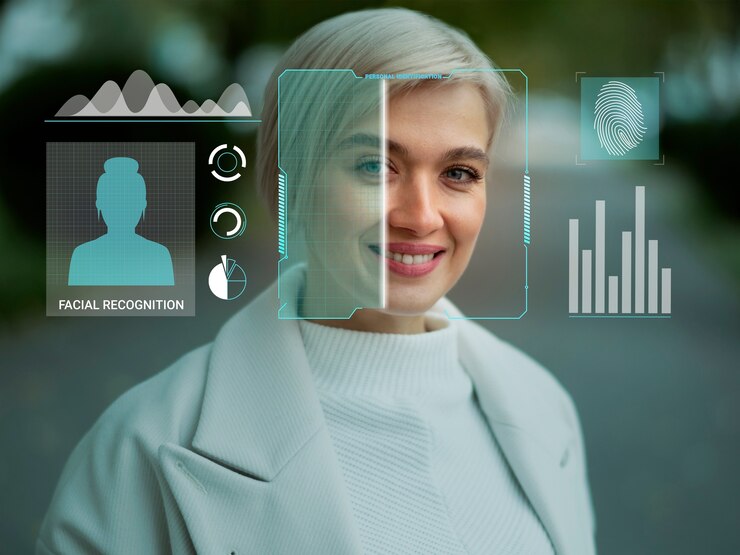The advantages of a face recognition attendance system include accurate tracking and enhanced security, but it may raise privacy concerns and be costly to implement. Face recognition attendance systems offer precise tracking of employee attendance and eliminate the need for manual record-keeping, leading to time and cost savings.
However, the system may raise privacy concerns as it involves capturing and storing sensitive biometric data, and it can be expensive to implement and maintain, especially for smaller businesses. Implementing a face recognition attendance system in the workplace offers several benefits and drawbacks.
Understanding these advantages and disadvantages can help businesses make an informed decision about whether to adopt this technology.

Credit: www.cyberlink.com
Increased Accuracy And Efficiency
When it comes to face recognition attendance systems, one of the key advantages is the increased accuracy and efficiency they offer. This technology can bring about significant improvements in various aspects of managing employee attendance, leading to more streamlined processes and enhanced precision.
Reduction In Time Theft
The implementation of a face recognition attendance system can effectively reduce time theft within an organization. With this technology, employees are required to physically present themselves for verification, eliminating the common practice of friends or colleagues clocking in on behalf of others.
Elimination Of Buddy Punching
Buddy punching, where employees clock in for absent colleagues, can be entirely eliminated with the use of face recognition attendance systems. It ensures that each individual must be physically present and verified before their attendance is recorded, helping to maintain the integrity of the attendance records.
Quick And Contactless Process
Another advantage of face recognition attendance systems is the quick and contactless process they offer. Employees can clock in and out efficiently with a simple scan of their face, avoiding the need for physical contact with traditional time clock systems.
Enhanced Security And Privacy
Enhanced security and privacy are key factors to consider when evaluating the advantages and disadvantages of a face recognition attendance system. This technology offers a unique biometric identification process, data encryption and protection, as well as minimized risk of identity theft. Understanding the benefits and drawbacks of these features is crucial for businesses and organizations deciding whether to implement this system.
Unique Biometric Identification
A face recognition attendance system provides a secure and reliable means of identifying individuals based on unique facial features. This innovative biometric identification method ensures that only authorized persons can gain access, enhancing security levels within the organization. By using distinct facial characteristics for authentication, such as iris and facial contours, this system significantly reduces the risk of identity fraud and unauthorized access.
Data Encryption And Protection
The system encrypts and stores facial data securely, mitigating potential privacy concerns. Data encryption techniques safeguard sensitive information and prevent unauthorized access, maintaining the privacy and security of personal data. By adhering to strict encryption protocols, the face recognition attendance system ensures that confidential facial information is protected from external threats, contributing to enhanced data security and privacy.
Minimized Risk Of Identity Theft
Unlike traditional identification methods that rely on cards or passwords, face recognition minimizes the risk of identity theft. Through unique biometric verification, the system ensures that individuals cannot fraudulently use another person’s identity for attendance purposes. This feature significantly reduces the likelihood of unauthorized persons gaining access to sensitive areas, enhancing overall security and privacy within the organization.
Cost-effective And User-friendly
Implementing a face recognition attendance system offers a range of benefits, particularly in terms of cost-effectiveness and user-friendliness. Below, we’ll delve into the advantages and disadvantages of this technology and evaluate how it delivers on both counts.
No Need For Additional Hardware
Unlike traditional attendance systems that often require the purchase and maintenance of specialized hardware such as card readers or biometric scanners, face recognition technology eliminates the need for additional devices. By leveraging the built-in cameras on existing devices such as smartphones or computer systems, this system minimizes the associated hardware costs.
Reduced Administrative Workload
One of the key advantages of face recognition attendance systems is the significant reduction in administrative workload. Because this technology automates the attendance tracking process, it removes the need for manual data entry and verification. This allows administrative staff to focus on more strategic tasks rather than being bogged down by attendance-related paperwork.
Improved User Experience
From an end-user perspective, face recognition attendance systems provide a seamless and convenient experience. Employees or students can simply scan their faces to record their attendance, eliminating the need for physical cards or tokens. This streamlined approach enhances the overall user experience and reduces the likelihood of errors or fraudulent practices.
Potential Privacy Concerns
Collection And Storage Of Facial Data
The collection and storage of facial data from a face recognition attendance system raise significant privacy concerns. Facial data, being a highly sensitive and personal information, requires strict handling to ensure the privacy and security of individuals. The process of collecting and storing facial data raises questions about how this information is being used, managed, and protected.
Risk Of Misuse And Unauthorized Access
Another potential privacy concern of face recognition attendance systems is the risk of misuse and unauthorized access to the facial data. The system’s vulnerability to cyber threats and unauthorized access can lead to breaches of privacy and security, putting individuals at risk of identity theft, surveillance, or other forms of misuse.
Facial data captured by the system can be exploited for purposes beyond attendance tracking, such as targeted advertising, facial recognition surveillance, or profiling. The potential for misuse and unauthorized access highlights the need for robust security measures and ethical guidelines to safeguard the privacy of individuals.
Environmental And Technical Limitations
Face recognition attendance systems offer several advantages, including efficiency, accuracy, and convenience. However, like any technology, they also come with certain limitations. This article will explore the environmental and technical limitations of face recognition attendance systems.
Reliance On Good Lighting Conditions
One of the environmental limitations of face recognition attendance systems is their reliance on good lighting conditions. This system requires sufficiently bright and uniform lighting to accurately capture and analyze facial features. In low-light environments or areas with uneven lighting, the system may struggle to accurately identify individuals, leading to potential reliability issues.
Potential Accuracy Issues With Certain Face Types
Another technical limitation of face recognition attendance systems is their potential accuracy issues with certain face types. Variations in facial features, such as scars, facial hair, or glasses, can sometimes lead to incorrect identification. While advancements in technology have minimized these issues, certain facial characteristics may still pose challenges to the system’s accuracy.
Vulnerability To Environmental Interference
Face recognition attendance systems are also vulnerable to environmental interference. Factors such as extreme weather conditions, reflections, or obstructions can affect the system’s ability to capture and recognize facial patterns. This vulnerability to environmental interference can impact the system’s reliability, especially in outdoor or unpredictable settings.
Ethical And Legal Considerations
The implementation of a face recognition attendance system presents several ethical and legal considerations that organizations need to address. This technology raises concerns related to compliance with privacy regulations, ethical implications of facial recognition, and potential discriminatory effects.
Compliance With Privacy Regulations
When integrating a face recognition attendance system, organizations must ensure compliance with privacy regulations such as the General Data Protection Regulation (GDPR) and the California Consumer Privacy Act (CCPA). This involves obtaining consent from individuals for the collection and processing of their facial data, as well as implementing stringent security measures to safeguard this sensitive information.
Ethical Implications Of Facial Recognition
The use of facial recognition technology in attendance systems raises ethical concerns regarding the autonomy and consent of individuals. It is essential for organizations to consider the potential impact on individuals’ privacy and personal autonomy. Furthermore, the ethical use of facial recognition technology entails transparency in its deployment and considering the broader societal implications of its implementation.
Potential Discriminatory Effects
Facial recognition systems have the potential to yield discriminatory effects, particularly concerning age, race, and gender. This technology may not be equally accurate across diverse demographic groups, leading to unfair treatment and biased outcomes. Organizations must actively address and mitigate the risk of discriminatory effects in face recognition attendance systems through rigorous testing and monitoring.
“`
Frequently Asked Questions Of What Are The Advantages And Disadvantages Of Face Recognition Attendance System?
What Are The Issues With Face Recognition Attendance System?
Face recognition attendance systems may have issues with accuracy, especially with bad lighting. They also pose potential privacy concerns and can be expensive to implement and maintain. Additionally, they may not work well with certain facial features or accessories.
Why Use Face Recognition Attendance System?
Face recognition attendance systems are efficient, secure, and accurate. They eliminate manual tracking, prevent buddy punching, and save time. Its advanced technology enhances security and reduces administrative workload. Additionally, it provides real-time data and improves overall attendance management.
What Is A Negative Effect Of Using Facial Recognition In Schools?
Facial recognition in schools can lead to privacy concerns and the potential for misuse. It may also contribute to a negative impact on students’ mental health and well-being.
What Are The Pros Of Facial Recognition Biometrics?
Facial recognition biometrics offer efficient and secure identification. They provide seamless user experience and reduce fraud risks. It can be easily integrated with existing systems and offers real-time identification.
Conclusion
The face recognition attendance system offers increased accuracy and efficiency in recording attendance. However, it raises concerns about privacy, security, and potential biases. Businesses must carefully evaluate the pros and cons before implementing this technology. With thoughtful consideration, organizations can harness the benefits while managing the drawbacks.

